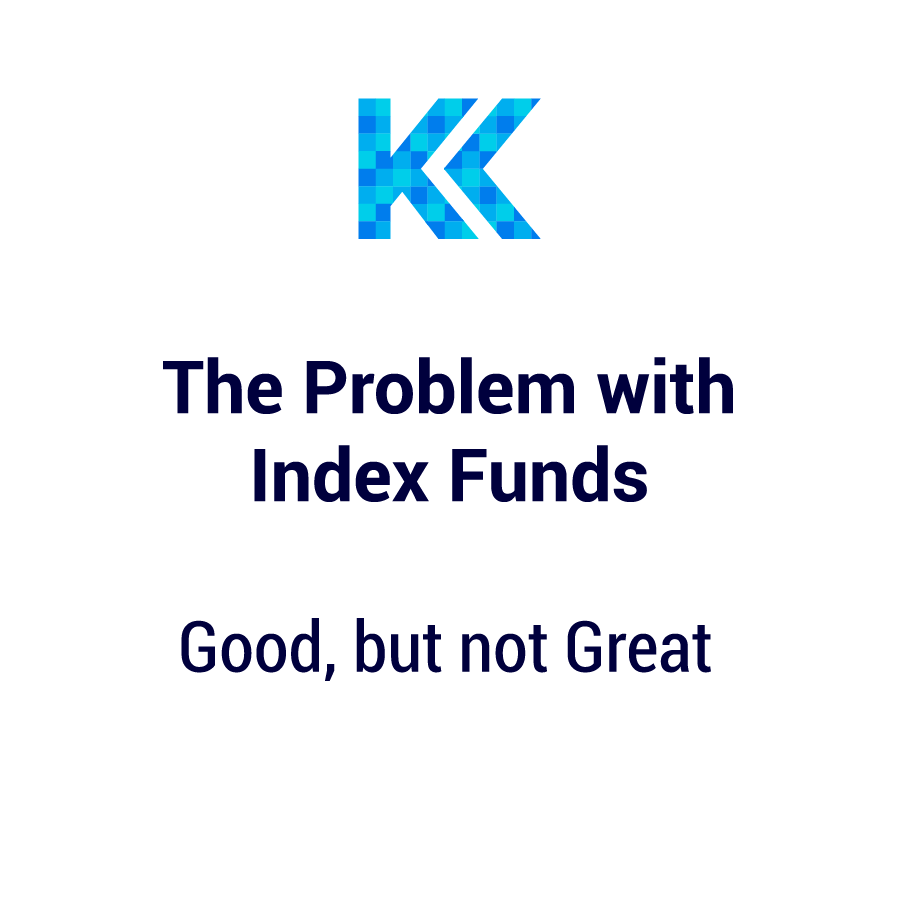Index funds have become the go-to solution for millions of investors. Firms like Vanguard under Jack Bogle pioneered the strategy back in the 1970’s and saw huge success. They’re marketed as simple, low-cost, and “passive”, an easy way to get broad exposure to the stock market without trying to pick winners or time the market.
And to be fair, index funds are a much better choice than the high-cost, actively managed mutual funds that dominated the investment industry a generation ago. But when you dig a little deeper, you’ll find that index funds aren’t quite as passive, neutral, or cost-free as they appear.
For serious investors with meaningful wealth, these hidden issues can quietly chip away at returns in ways most people never notice.
What Exactly Is an Index Fund?
An index fund is designed to track the performance of a specific market benchmark, such as the S&P 500 or the Russell 2000. Instead of paying a manager to pick stocks, the fund simply buys the stocks in the index it follows.
It sounds straightforward. But the details matter.
-
Market-Cap Weighting: Most index funds weight stocks based on their size (market capitalization). That means the biggest companies, like Apple, Microsoft, and Nvidia , dominate the index, while thousands of smaller companies have almost no impact.
-
Rebalancing & Reconstitution: Index providers regularly update their list of holdings. Stocks are added or removed on scheduled reconstitution dates, and funds must adjust accordingly.
-
Rules-Based, Not Purely Passive: Every index fund follows a specific set of rules set by the index provider (such as Standard and Poor’s for the S&P 500), and those rules create trading activity as the market shifts every quarter.
The Hidden Problems Most Investors Don’t See
1. Not Truly Passive
When everyone thinks they’re “buying the market,” what they’re actually buying is a version of the market shaped by an index provider’s rules. For example, the S&P 500’s selection committee meets just 4 times a year and makes decisions not only based on market cap, but factors such as profitability, liquidity, and float. That’s not would I would consider pure passivity.
2. Forced Trading Costs
Because the quarterly dates of index rebalances are public knowledge, Wall Street traders often get ahead of index funds. When a stock is about to be added to the S&P 500, for example, hedge funds buy it in advance, pushing the price up. By the time the index fund buys, it pays a premium, a hidden execution cost that quietly eats into returns. An index’s funds low expense ratio doesn’t take into account money lost to poor trade execution.
3. Concentration Risk
Market-cap weighting means a handful of mega-cap stocks can drive the bulk of returns. In 2023, for example, just seven stocks accounted for most of the S&P 500’s gains, most in the tech sector. That’s not true diversification.
4. Overlooked Opportunities
By definition, traditional index funds only hold the companies that make it into the index. But markets are far bigger than the S&P 500. Smaller, more profitable companies often get ignored, even though decades of research suggest they can deliver higher expected returns.
A Smarter Approach: Evidence-Based Investing
Luckily, investors no longer have to choose between overpriced active funds and the flaws of traditional index funds.
They can use an evidence-based approach that improves on indexing by:
-
Broadly diversifying across the entire market, not just the largest names
-
Research-supported tilts toward factors with higher expected returns like smaller companies, value companies, higher profitability businesses, companies that invest more conservatively, and companies with strong recent momentum
-
Trading flexibly, not on a rigid & public quarterly schedule, to avoid paying premiums to hedge funds front-running index changes
-
Keeping costs and expense ratios low while still managing risk efficiently
The result is an investment strategy that captures the power of markets while avoiding many of the shortfalls baked into traditional index funds.
When to Stick With Index Funds
To be clear, index funds are not “bad.” For many people starting out, they’re a perfectly fine solution, especially when compared to high-fee, actively managed alternatives.
But if you’ve accumulated significant wealth, the flaws in the index fund model become more important. That’s when taking a closer look at smarter, more efficient approaches can add meaningful value.
Final Thoughts
Index funds have done a huge service in driving costs down and improving investor returns compared to the old model of high-fee stock picking. But they are not the end of the story.
If you’ve built significant wealth, it’s worth asking:
-
Am I truly diversified, or am I just concentrated in a handful of mega-cap companies?
-
Am I paying hidden execution costs I don’t even see?
-
Could a more flexible, evidence-based approach help me capture better returns without taking more risk?
If you’re unsure whether your current investment approach is truly working for you, we’re happy to provide a second opinion. Many investors are surprised to learn that they can maintain low costs, improve diversification, and gain more control, all without abandoning the long-term discipline that index funds promote.

– Clint Kraft
Founder and Financial Advisor, Kraft Capital

